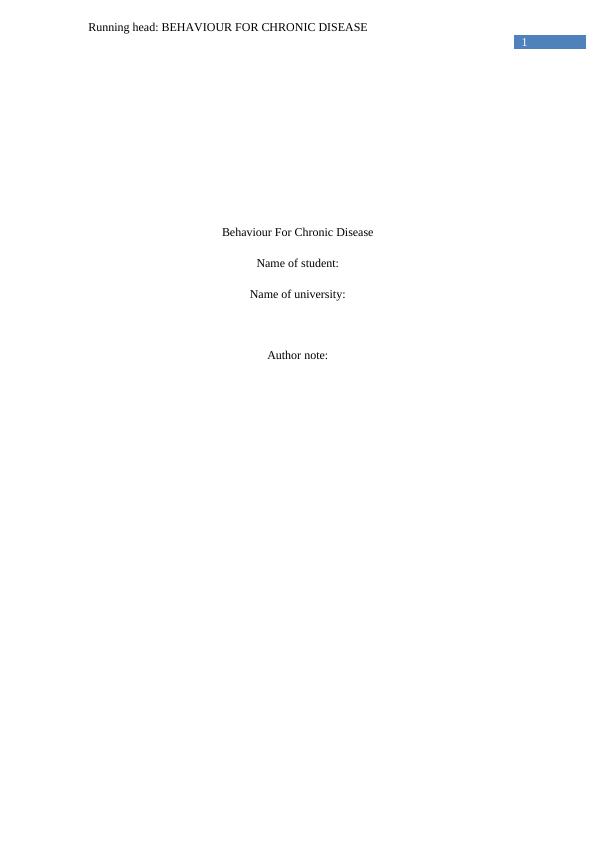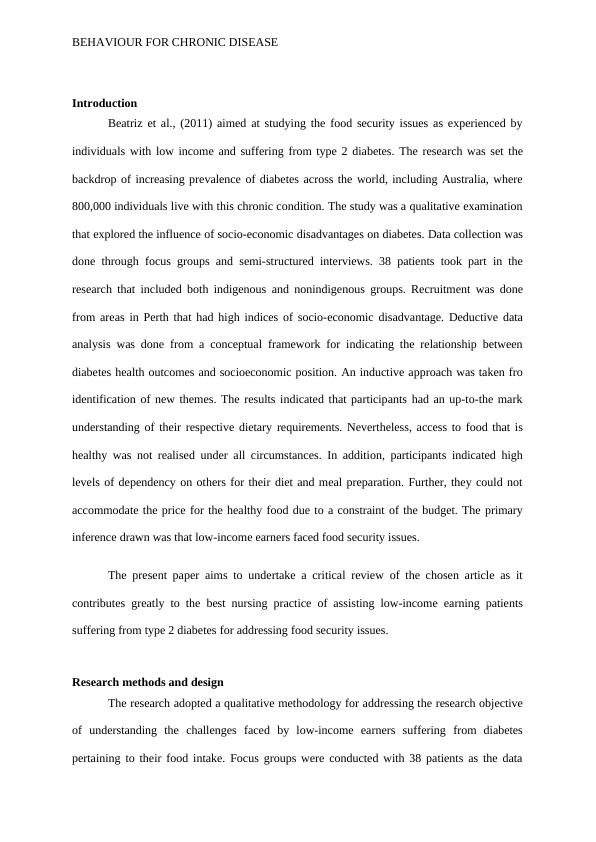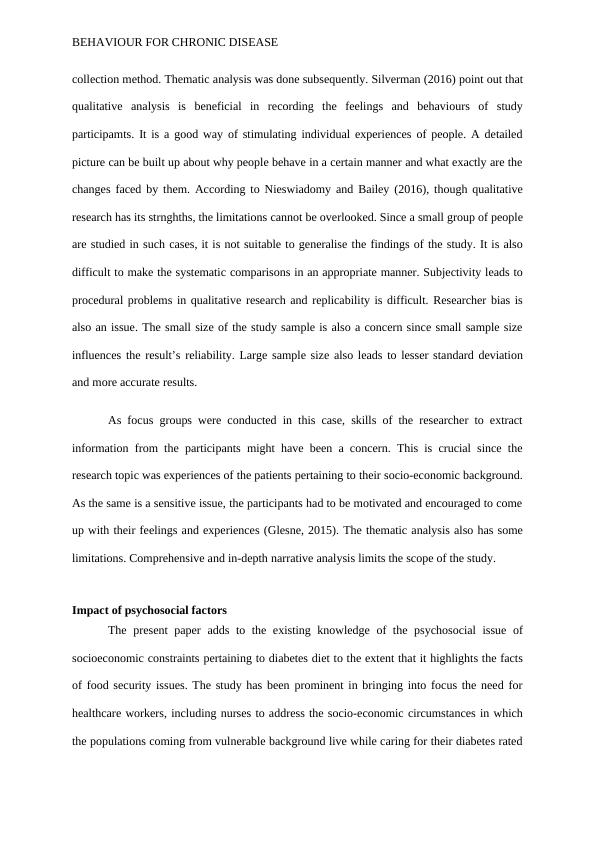NURS2000: Health Behaviors of Patients Diagnosed with Type 2 Diabete
Added on 2019-10-31
About This Document
In the assignment, brief different articles were included from which one article needs to be selected for critical review. The report includes details of the aim of the article, a brief summary of the research sample, setting and findings. The contribution of the article to the professional knowledge of nursing/Para medicine students is also mentioned in the report. The report includes a detailed evaluation of the research method used in the article and its strengths and limitations. Through the analysis, the psychosocial factors which are related to the chronic diseases are identified. Further, the report includes the details of how the article selected for the analysis can be applied to clinical practice or student paramedics.
NURS2000: Health Behaviors of Patients Diagnosed with Type 2 Diabete
Added on 2019-10-31
End of preview
Want to access all the pages? Upload your documents or become a member.



